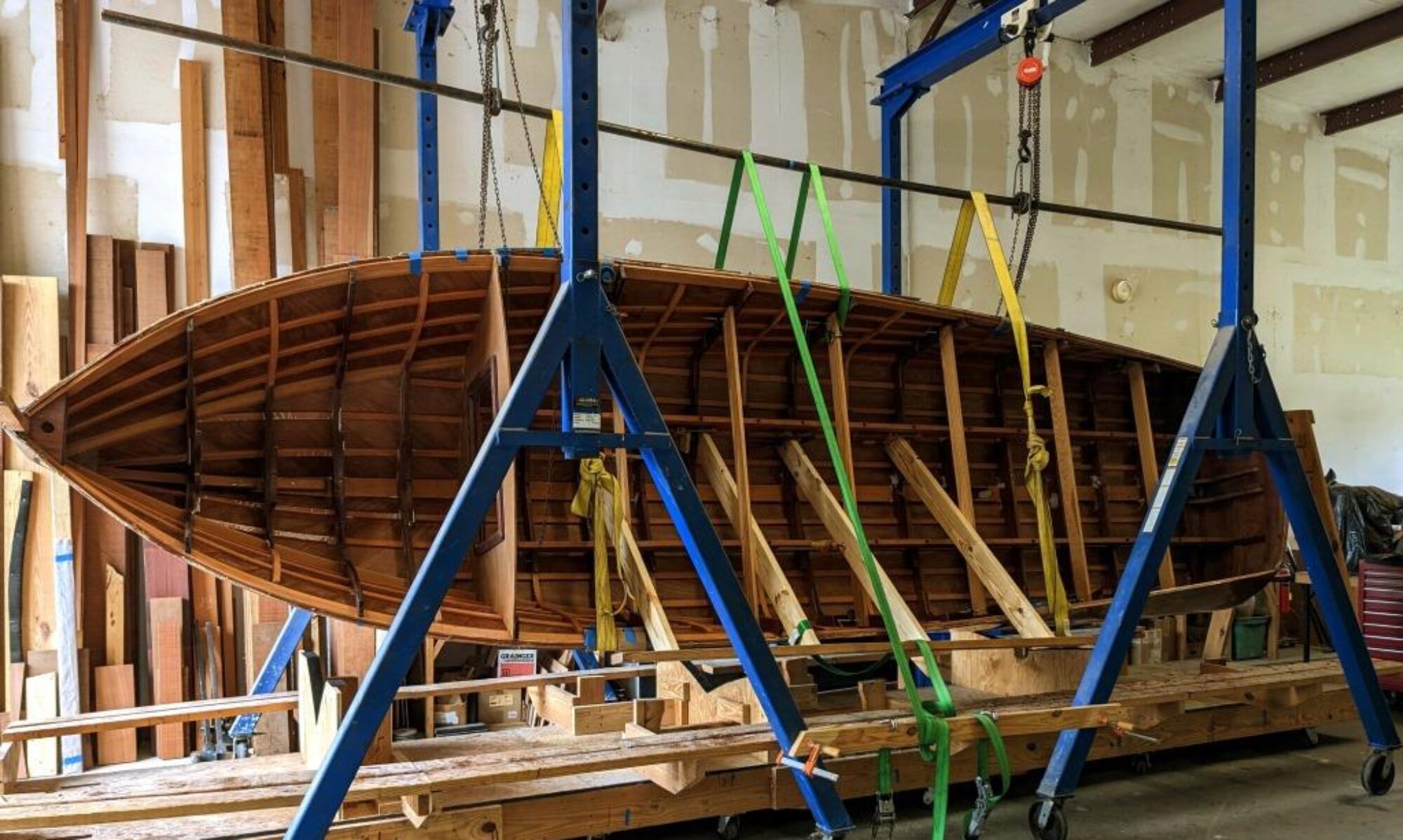
One fine June day, a 2013 Riva Iseo showed up at the shop after the owner asked if I could do varnish work on a wooden deck. He had purchased the boat used from someone in Miami, FL. Continue reading “Restoring the wood on a Riva Iseo”

Boat Repair, Restoration, Building
“Finishing” is the process of adding protective coatings and (hopefully) beauty to your work. Painting, varnishing, waterproofing–all of these are “finishing”.

One fine June day, a 2013 Riva Iseo showed up at the shop after the owner asked if I could do varnish work on a wooden deck. He had purchased the boat used from someone in Miami, FL. Continue reading “Restoring the wood on a Riva Iseo”

I have not failed. I have just found 10,000 ways that won’t work. — Thomas Edison
Adding a layer of fiberglass cloth to any wooden boat will add an enormous amount of toughness to it. And if you do it right, the fiberglass is invisible. That’s right — invisible. The problem is in the “doing it right” part.
Okay, let’s step back a bit. Continue reading “Fiberglass Setback”

This week I had the opportunity to meet one of the more attractive boats in the Charleston area. “Stella” is a 2014 Chris Craft Launch 25, and she came in for some varnish on her brightwork. Here you can see a detail of the port toe rail after the first of two refresher coats. Continue reading “Varnishing Stella”

You find out there’s more to know.
Well, that’s often the case here at Ashley River Boatworks, anyway. In my last post, I talked about making a test strip to decide what stain and finish options to use in the Palm Beach 22 runabout we’re building. I wanted to test some conventional oil based stains next to a new staining system by Awlgrip that I used on a previous project–a restoration of a 1949 Chris Craft runabout. Continue reading “Just When You Think You Know What You’re Doing…”

It’s not too early to start thinking about the finishing program for this boat. I know, it seems ridiculous to be thinking about this at such an early stage, but I want to test several different options for varnishes and urethane clear coats for durability. Considering the effort that goes into finishing, it’s worth gathering a little empirical data to help make the decision. Continue reading “Picking a Color for the Boat”

Chrome and highly polished stainless steel are beautiful things on a Chris Craft. They really make the boat pop. Don’t cheap-out on your re-chroming. There aren’t a lot of chrome shops left in the U.S. It’s a nasty, dirty process that takes a craftsman’s eye and touch to do right. It’s expensive, but if you want it to last, you’ve got to pay for it.
Stainless is a little easier. It’s not terribly expensive yet, and often it’s easier to replace than to try to refurbish. But if it’s not deformed, a buffing wheel and a little elbow grease can go a long way to making some old stainless look better. Continue reading “Adding the Shiny Parts”

After the varnish is laid on, but before the final coat, it’s time to caulk the deck seams. Most of them (2 out of 3) are false seams–only there for show. But every third one is live. It is essential to get a good seal with the seam caulking to prevent leaks and rot. Continue reading “Caulking the Deck Seams”

Staining is just preparation for varnishing. We talked about staining recently here. Now it’s time for a bit of strategizing. We’re anticipating about 6 coats of conventional varnish (Interlux Schooner 96) and then about 8-10 coats of AwlWood MA Gloss over that. When you’re talking about that many coats, spraying is the way to go. Continue reading “Varnishing the 1949 Chris Craft 17 ft Deluxe Runabout”

With all the interior work finished, it’s time to focus on the pretty part. It’s time to finish stripping the hull, repair holes and dings, and stain the hull. All this precedes the varnishing phase. I use the most aggressive chemical stripper I can find (Jasco brand) and let it do the work for me. I slap it on liberally and let it sit there awhile and eat away the old varnish. You can actually hear and see it doing this if you watch closely. Continue reading “Staining the boat”